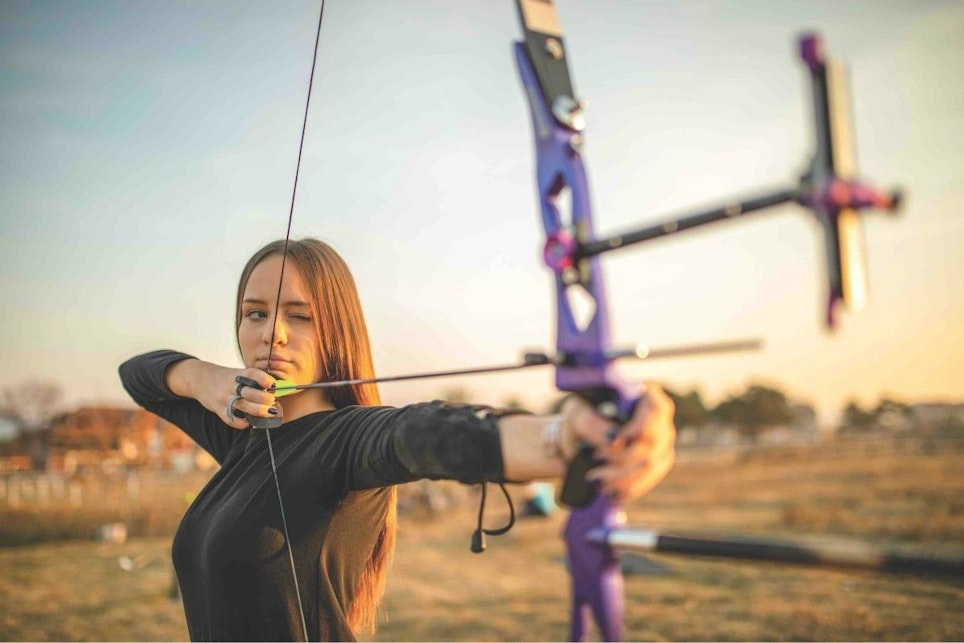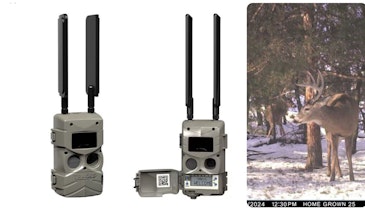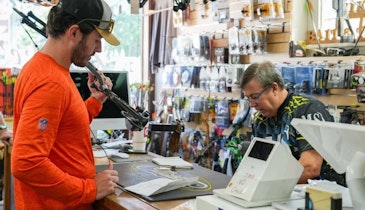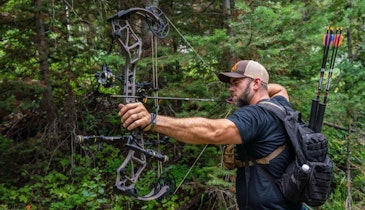Developing a new outdoor archery range involves more than just the location and design, but the audience you hope to attract, as well as the culture you hope to instill. This article is primarily about how to advocate for a public archery range, but many aspects are useful for a business owner hoping to add their own range. Here are some steps you should take as you begin planning a potential archery facility in your community or business.
Confidence Is Key
More than a positive attitude, smiling and being nice, the best range advocates are confident and deliver consistent and clear messages. Part of confidence includes believing and acting as if archery is as valid and active a mainstream sport as any other in the community. One way to demonstrate is when searching the community for a location, you start with an active recreational hub rather than some undeveloped land at the edge of town. Infrastructure like roads and bathrooms are expensive, so finding a place where those things already exist and where people are already active is the best place to locate a new range. The Alabama Department of Wildlife has more than a dozen archery parks around the state with a majority of them located around a recreational hub like baseball fields.
As I consult for facilities, another common mistake is offering to provide facility maintenance. This leaves an impression that the sport is minor league. If a range can be located in the recreational hub, there is no reason to believe it couldn’t be maintained just like the ball fields and tennis courts. When you really get down to it, the only archery-only pieces involved in an outdoor archery range are targets. The rest revolve around building and grounds.
Safety is critical, but if you put too much emphasis on it, you might leave the audience with the impression archery is too high a risk. Balance any messages about safety and risk with benefits of the sport. Here’s a quick list:
Great way to gets kids off their screens
- Almost anyone can participate (age, ability level, gender, body size or shape, etc.)
- Concentration and focus
- Patience and coordination
- Stress relief
- Exercise, movement, outdoor activity
- Social, team and individual activity
Have Data Ready
A needs assessment will be important whether a public or private entity is owner of the range. It’s best to start with as much local data as you can find. How many archery clubs are in the area? What is their membership levels and event participation numbers? How many schools with archery program exist, and what is their growth/success level? What other ranges exist in the region, and what information on their use is available? What parks and recreation programs exist and participation levels? What archery shops are in the area and what customer and/or program data might be shared? Are there any other youth organizations that offer archery (4-H shooting sports, YMCA, churches etc.)?
Recently, I spoke with John Schaffer of Schaffer Performance Archery about a new range that opened in November 2018 in his community of Burnsville, Minnesota. When I asked him about his assistance with the project, he was quick to point out how prepared he was to talk about customer numbers. City councils want to know the impact of any project and must be able to justify the cost.
Once you have all of the local information you can gather, reach out regionally, statewide and nationally. Get as much information on membership and participation in programs and events as you can. Here are some of the organizations to contact:
State archery and bowhunting organizations
- USA Archery
- National Field Archery Association
- Archery Shooters Association
- International Bowhunting Organization
- Scholastic 3-D Archery
- National Archery in the Schools Program
You might also hit up R100 or any other major archery event organizers for participation, especially if an event is being held near you. Contact Archery Trade Association for any recent national archery and/or bowhunting participation information. When you contact them, get a copy of the latest archery safety brochure. You’ll need to have it handy at every meeting. In addition, Sports and Fitness Industry (SFIA) conducts a national survey each year for all sports participation and has trends for recent years. If you can get a hold of SFIA topline report, you’ll be able to compare participation levels to other sports as well.
Brainstorm
Assuming the numbers support the need for a new archery range, it’s time to begin dreaming. Using the following questions, brainstorm a vision or future picture for this facility. What would the ideal range look like? Describe the space if money were no object. We all know money is an object, just don’t let it limit you in the beginning. It’s always easier to negotiate down to something that’s still pretty great then fight to keep bare minimums.
Who would be there? How would the range meet people’s desires for great experiences, social interaction and personal well-being — all part of today’s reality.
What types of 3-D events might you operate? 3-D targets and general program equipment require lots of storage. Almost every range manager I’ve spoken to over the years says they wished they had more storage space.
You must be able to paint a picture and tell the story of what this facility will be when it is finished. If you can’t imagine it, how are you going to sell it? For the first meeting, make it a fun brainstorming event. A good session means no one judges the ideas — they are simply gathered and recorded. If you hit any idea roadblocks during your brainstorming session, consider archery range experiences you hate and then start recording those as well. Knowing what you don’t want is almost as important as knowing what you do. Use a method of round robin where everyone in attendance has an opportunity to contribute. This will improve buy-in from the start. When you complete your brainstorming session, set a date for the next meeting where your job will be to organize the ideas and start bringing life to the project.
Set Goals
Early goals will revolve around major topics like design, budget and advocacy. As the facility gains traction, goals for construction, operations and marketing will be added.
First, let’s start with setting specific advocacy goals. This step is rarely considered but is one of the most important. Gather contact information for individuals and groups whom will need to be approached for the facility to be approved and funded. Some of the government officials likely involved in the process include: city council, mayor, parks and recreation director and staff, police chief, city risk management staff and zoning department. Neighbors of a proposed facility should be contacted, and you might even want to hold an open house for them. Consider media outlets likely to be covering the story. In addition, a list of supporters, like club members and archery students, should be gathered and tracked. Messages will have to be drafted, calls made and meetings attended. A long list of supporters means a better chance of putting “butts in the seats” at important community meetings.
Second, set goals for drafting a design. How aggressive do you want to be with the project? Set a schedule for meetings and brainstorming sessions based when you’d like to have an initial design finalized. Your deadline will dictate if you hold planning meetings once per week or once per month. I wouldn’t recommend anything less than that as that will reduce momentum. Who will be researching and gathering potential designs and when would you like that completed? How many do you want on hand to compare? Do you have someone who can provide some initial design services or will you have to seek out a landscape or regular architect? How much time will they need?
For budget, start by brainstorming a full list of potential budget items. Who will contact existing ranges for budget samples and/or start gathering equipment costs? What are the staff needs and costs? What about program equipment? Will more than one version need to be created based on priorities? Be as thorough as possible, even if the dollar amount starts getting scary. Start researching funding sources like state wildlife agencies, Easton Foundations and other parks and recreation funding sources.
In order to keep the range “in the black,” early planning should include programming goals for the first 3 years. What introductory programs will you offer and how often? Into which programs will participants advance and how many of those will be offered? What events, competitions or workshops will be held, how often and what are the needs for each? Which activities related to bowhunting or bowfishing will be offered? What equipment is needed to conduct those programs? How many instructors and coaches will be needed and how will they be hired and trained? If possible, use a 1-year calendar and plot out possible scenarios of weekly programs as well as monthly and quarterly activities.
Post a Calendar/Deadlines
For each of the above areas, get out a calendar and start plotting out major goal markers. For each goal, backtrack the tasks that must be completed and insert them in the calendar as well. Pencil out as much as you can for the first 6 months. Then, at least monthly, at the start, update your calendar, revise schedules and insert additional tasks with deadlines. The project is more likely to happen if you start planning early and adhere to assignments and schedules. If you can manage weekly goal setting sessions, that would be ideal. These kind of projects take significantly more time than most can imagine, often years.
The best way to approach your calendar is to pick a date for the end goal, like a final draft design, and work back from there to add tasks. I’ve done this exercise with a few groups and they almost always have to move the end goal out because they quickly realize they are being more aggressive than what is realistically possible. Once a calendar is sketched, don’t forget to assign names to each. This holds everyone accountable. And, your group is more likely to get work done if the calendar is publicly posted in some manner.
Final Thoughts
This process may feel a little overwhelming but if the need for a new outdoor archery range exists, I am confident the time you spend planning will make the project run more smoothly. The other benefit is the professional appearance that will be conveyed. City staff, community officials and media always appreciate when groups and individuals with proposed projects are fully prepared and ready to answer tough questions and provide supporting materials. Your dream is more likely to become reality if you take these important early steps. If you need any assistance with your range project, contact me at michelle@anavahconsulting.com.








